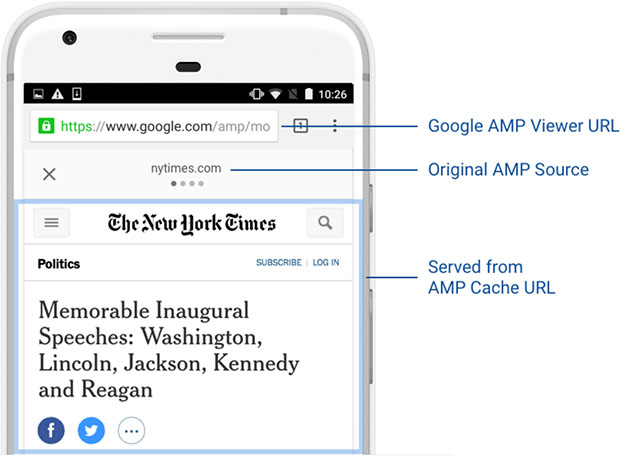Google Clears-Up Confusion With AMP Pages, Makes Them Easier To Share
Since its introduction a couple of years ago, Google's AMP (Accelerated Mobile Pages) project has gained quite a bit of adoption, and for good reason. AMP exists to let people load webpages on their mobile devices quicker, thanks to Google's automatic caching that comes into play when visiting an AMP URL. Scripts that might ordinarily slow down a website are less worrisome with AMP.
However, AMP hasn't been without its critics. One major complaint has been tied to the URLs that AMP generates. We live in a sharing world: people love to pass along links to things they find interesting, humorous, or important. But if those URLs are hidden behind AMP, the receivers might not be tempted to click, simply because it looks a little sketchy.

This is something that Google has admitted is a problem. It cites a specific example of the New York Times website. Anyone browsing that website is going to be familiar with its URL, but if they look up and see references to AMP instead of just the full plain URL, caution could be raised. After all, the same kind of mechanic is how phishing works.
Going forward, this design is no longer going to exist. If someone wants to share an AMP URL, then the original URL will be the one that gets passed along. However, AMP would still help accelerate the URL once it's visited - nothing changes there.
Google has also just cleared up some confusion about AMP and website traffic. Some webmasters have been concerned that Google has been taking their traffic since it's routed through an AMP URL rather than the website's own. Google's response is that there is nothing to be concerned over: all traffic belongs to the website.
If you want really specific details about Google's implementation of AMP, you can hit up the URL below. As a regular user, you can simply relish in the fact that AMP will no longer obfuscate URLs, and for webmasters, "all your traffic are belong to you".

